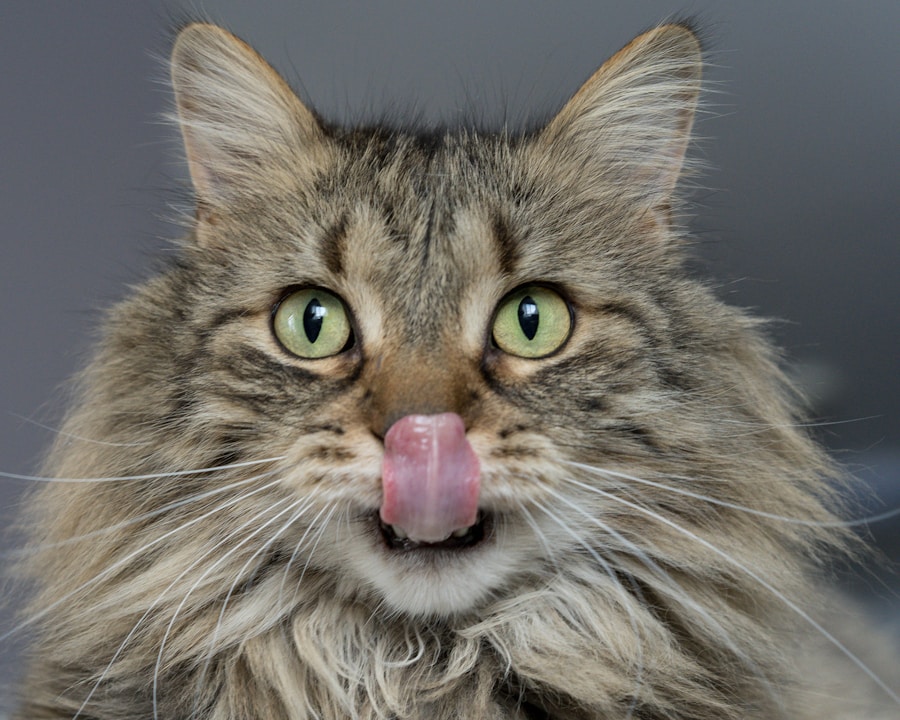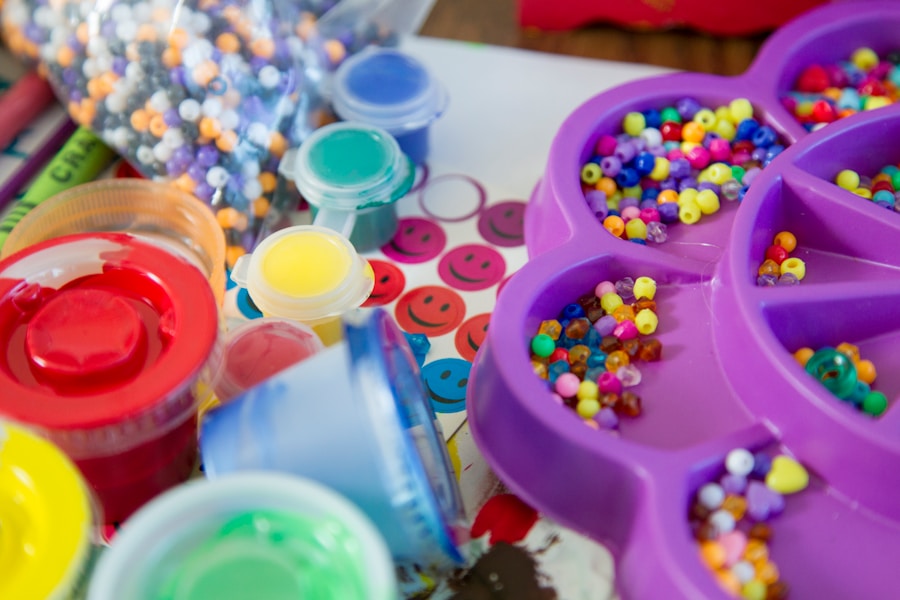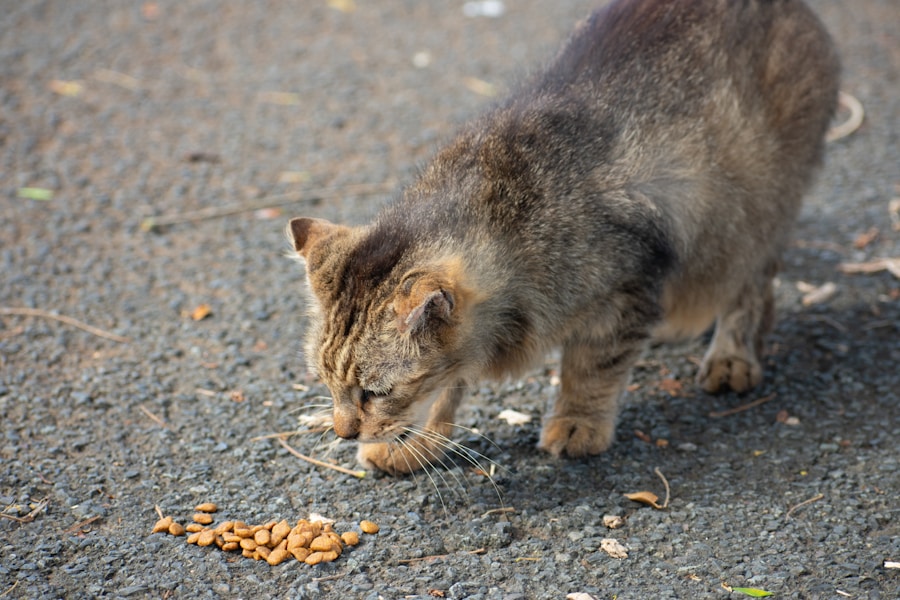Cats are obligate carnivores, which means that they require a diet that is high in animal protein in order to thrive. In the wild, cats would primarily consume small prey animals such as mice, birds, and insects. This diet provides them with the essential nutrients they need to maintain their health and well-being. When it comes to domestic cats, it’s important to provide them with a diet that mimics their natural dietary needs. This means choosing a cat food that is high in protein, moderate in fat, and low in carbohydrates. Additionally, cats require certain vitamins and minerals, such as taurine, which is essential for their heart and eye health. Understanding your cat’s nutritional needs is crucial for ensuring that they receive the proper balance of nutrients to support their overall health.
Cats also have specific dietary requirements based on their life stage and health status. Kittens, for example, require a diet that is higher in calories and protein to support their rapid growth and development. Senior cats, on the other hand, may benefit from a diet that is lower in calories and fat to help maintain a healthy weight and support their aging bodies. Cats with certain health conditions, such as kidney disease or diabetes, may require a specialized diet to manage their condition. By understanding your cat’s nutritional needs based on their life stage and health status, you can make informed decisions about the best cat food options for your feline friend.
Comparing Purina Cat Food Options
Purina offers a wide range of cat food options to meet the diverse nutritional needs of cats. Their products include dry kibble, wet food, and specialized formulas for kittens, adult cats, and senior cats. Purina cat foods are formulated to provide a balanced diet that meets the nutritional needs of cats at every life stage. Their products are made with high-quality ingredients, including real meat, poultry, or fish as the primary protein source. Purina also offers a variety of flavors and textures to appeal to different cats’ preferences.
When comparing Purina cat food options, it’s important to consider your cat’s individual needs and preferences. For example, if your cat prefers wet food over dry kibble, you may want to explore Purina’s selection of canned cat foods. If your cat has specific health concerns, such as hairball control or weight management, Purina offers specialized formulas to address these issues. By comparing Purina cat food options, you can find the best fit for your cat’s nutritional needs and dietary preferences.
Decoding Cat Food Labels
Decoding cat food labels can be a daunting task, but it’s an important step in understanding what you’re feeding your feline friend. When reading cat food labels, it’s important to look for key information such as the guaranteed analysis, ingredient list, and feeding guidelines. The guaranteed analysis provides information about the levels of protein, fat, fiber, and moisture in the food. This can help you determine if the food meets your cat’s nutritional needs. The ingredient list is also crucial, as it provides insight into the quality of the ingredients used in the food. Look for whole meat or meat meal as the first ingredient, as this indicates a high-quality protein source.
It’s also important to pay attention to any added supplements or fortifications in the food. For example, taurine is an essential nutrient for cats that should be included in their diet. Additionally, look for any artificial preservatives, colors, or flavors that may be listed on the label. These additives may not provide any nutritional benefit and could potentially be harmful to your cat’s health. By decoding cat food labels, you can make informed decisions about the best options for your cat’s diet.
Considering Your Cat’s Age and Health
When choosing a cat food for your feline friend, it’s important to consider their age and health status. Kittens have different nutritional needs than adult or senior cats, so it’s important to select a food that is appropriate for their life stage. Kittens require a diet that is higher in calories and protein to support their rapid growth and development. Adult cats have different energy requirements based on their activity level and overall health. Senior cats may benefit from a diet that is lower in calories and fat to help maintain a healthy weight and support their aging bodies.
In addition to age, it’s important to consider your cat’s health status when selecting a cat food. Cats with certain health conditions may require a specialized diet to manage their condition. For example, cats with kidney disease may benefit from a low-protein diet to reduce the workload on their kidneys. Cats with diabetes may require a diet that is low in carbohydrates to help manage their blood sugar levels. By considering your cat’s age and health status, you can make informed decisions about the best cat food options for their specific needs.
Consulting with Your Veterinarian
Before making any changes to your cat’s diet, it’s important to consult with your veterinarian. Your vet can provide valuable insight into your cat’s nutritional needs based on their age, health status, and lifestyle. They can also offer recommendations for specific cat food options that align with your cat’s individual needs. Additionally, your vet can help you navigate any dietary concerns or questions you may have about your cat’s nutrition.
Your veterinarian can also provide guidance on how to introduce new cat food to your feline friend. Cats can be sensitive to changes in their diet, so it’s important to transition them slowly to avoid digestive upset. Your vet can offer tips on how to gradually introduce new food and monitor your cat’s response to the change. By consulting with your veterinarian, you can ensure that you are making informed decisions about your cat’s diet and overall health.
Introducing New Cat Food to Your Feline Friend
When introducing new cat food to your feline friend, it’s important to do so gradually to avoid digestive upset. Cats can be sensitive to changes in their diet, so it’s best to transition them slowly over the course of 7-10 days. Start by mixing a small amount of the new food with their current food and gradually increase the proportion of new food while decreasing the old food. This gradual transition allows your cat’s digestive system to adjust to the new food without causing any upset.
It’s also important to monitor your cat’s response to the new food during the transition period. Keep an eye out for any changes in their appetite, energy levels, or litter box habits. If you notice any concerning symptoms such as vomiting, diarrhea, or lethargy, it may be a sign that the new food isn’t agreeing with them. In this case, it’s best to consult with your veterinarian for further guidance. By introducing new cat food to your feline friend slowly and monitoring their response, you can help ensure a smooth transition to their new diet.
Monitoring Your Cat’s Response to the New Food
Once you have fully transitioned your cat to their new food, it’s important to continue monitoring their response over time. Keep an eye on their appetite, energy levels, coat condition, and overall well-being. If you notice any changes or concerns, it may be worth revisiting their diet or consulting with your veterinarian for further guidance.
It’s also important to stay informed about any potential recalls or updates related to your cat’s food. Stay up-to-date on any news or information from the manufacturer about their products. If there are any concerns or issues with the food you are feeding your cat, it’s important to take action and make informed decisions about their diet.
In conclusion, understanding your cat’s nutritional needs is crucial for providing them with a balanced and healthy diet. By comparing Purina cat food options and decoding cat food labels, you can make informed decisions about the best options for your feline friend. Considering your cat’s age and health status, consulting with your veterinarian, introducing new cat food slowly, and monitoring their response are all important steps in ensuring that your cat receives the proper nutrition they need to thrive. By taking a proactive approach to your cat’s diet and overall health, you can help ensure that they live a long and healthy life by your side.





